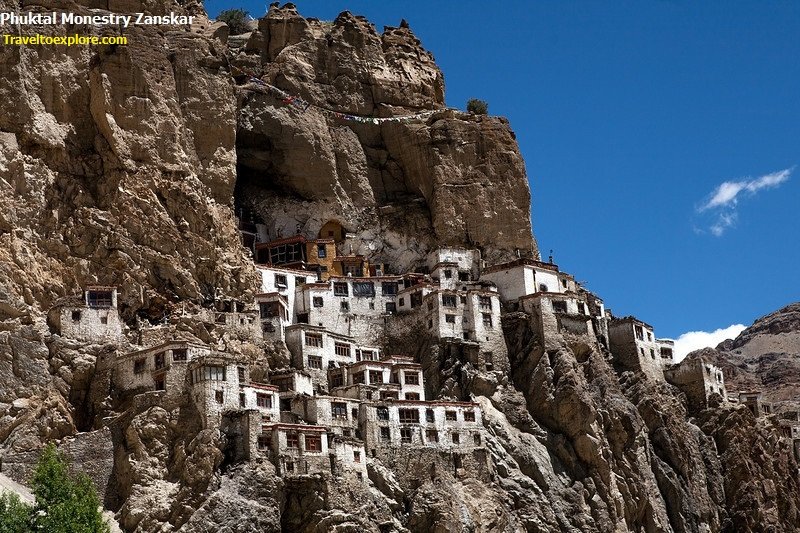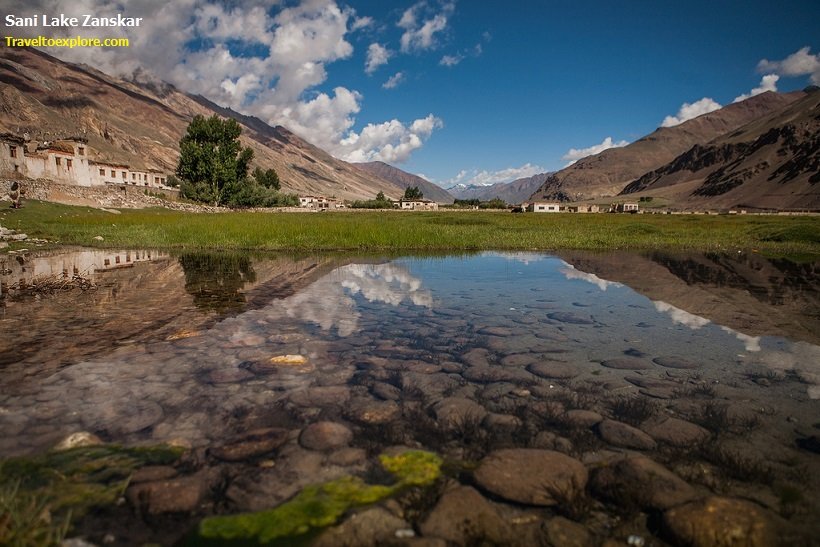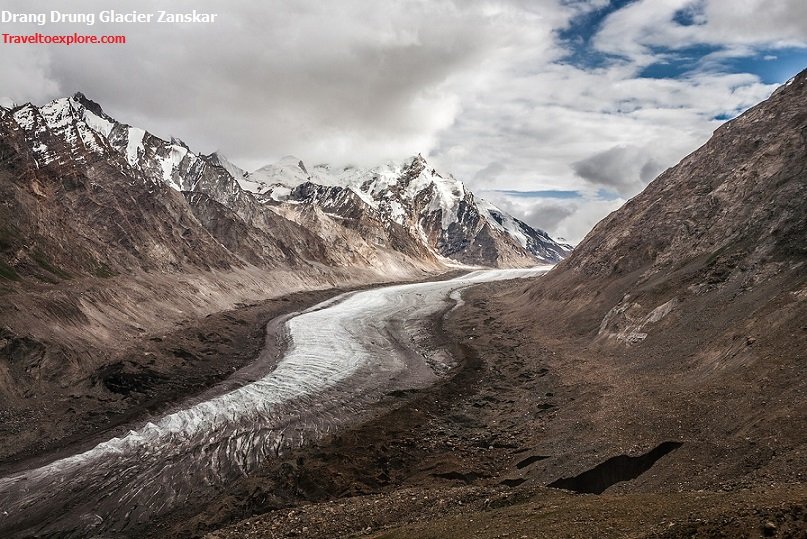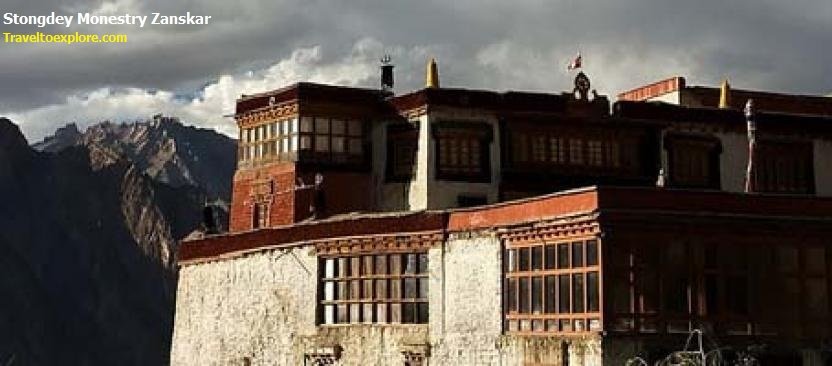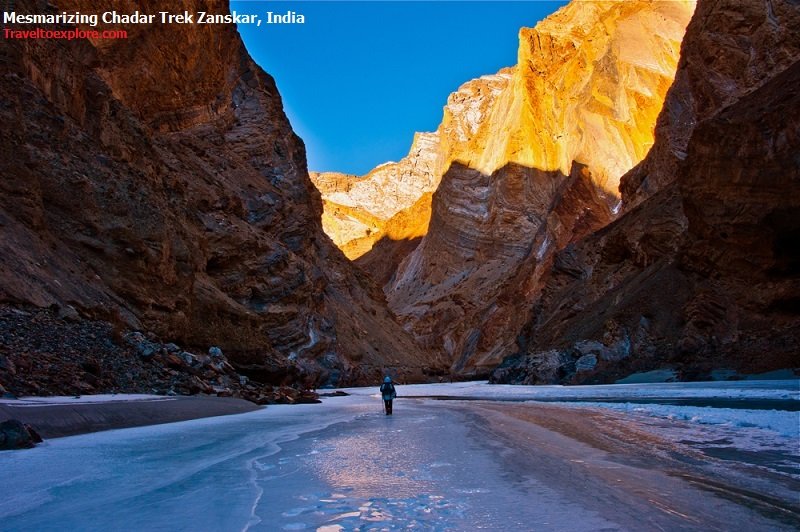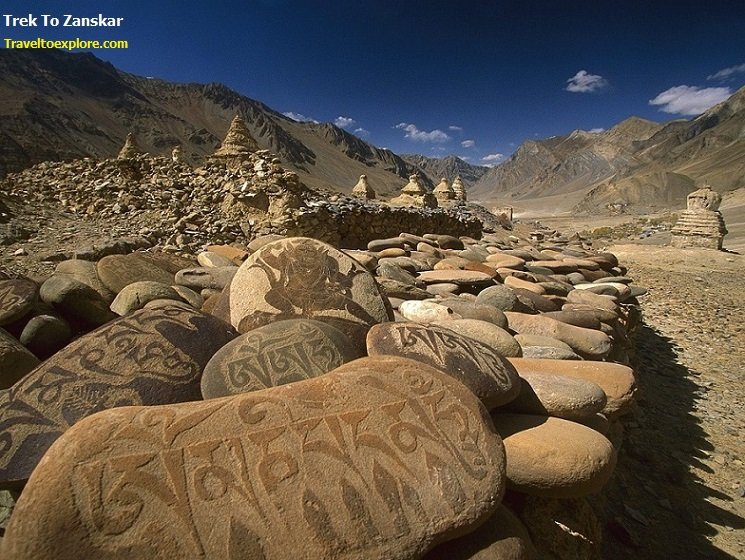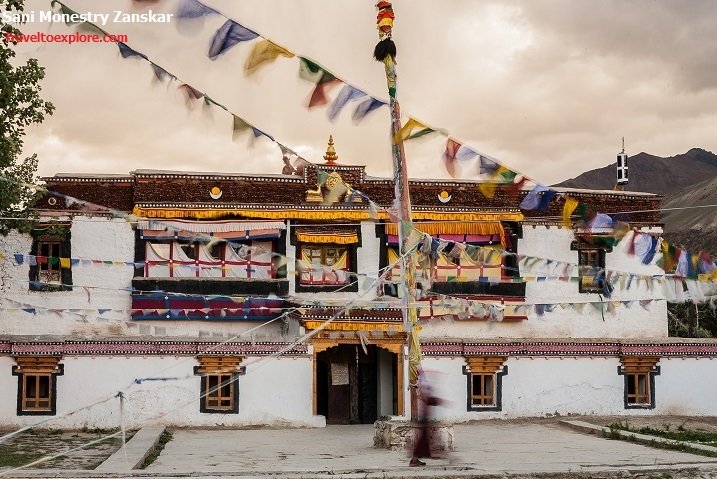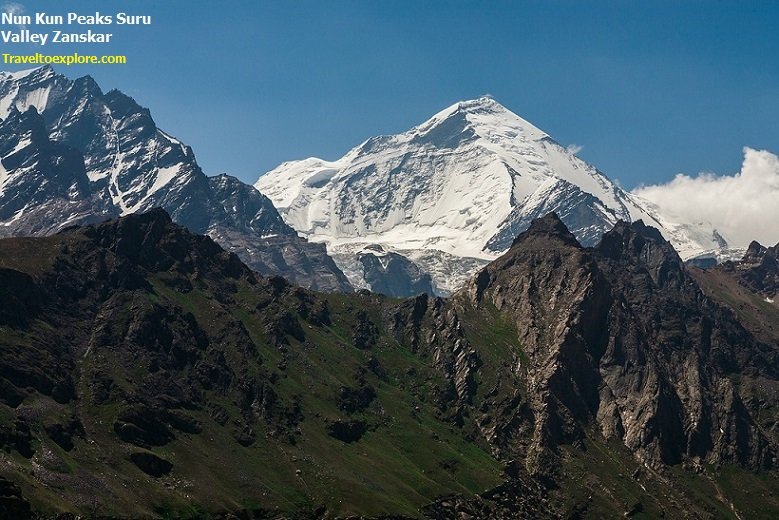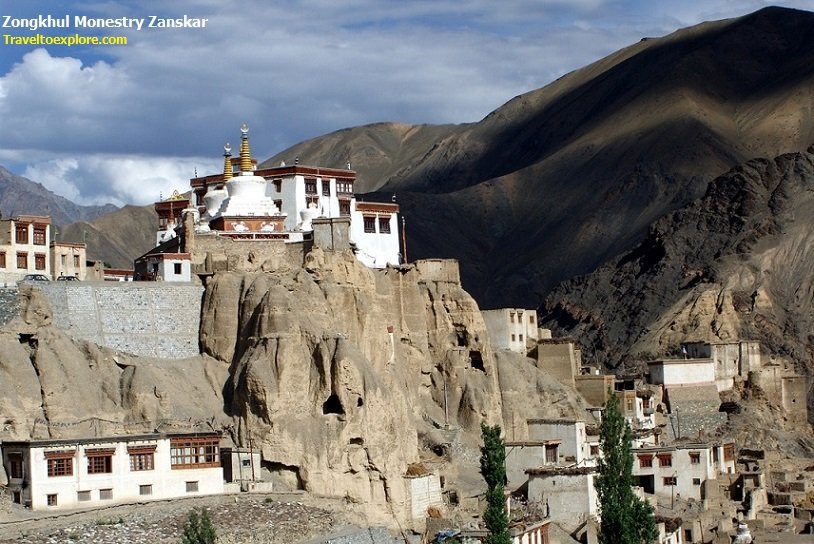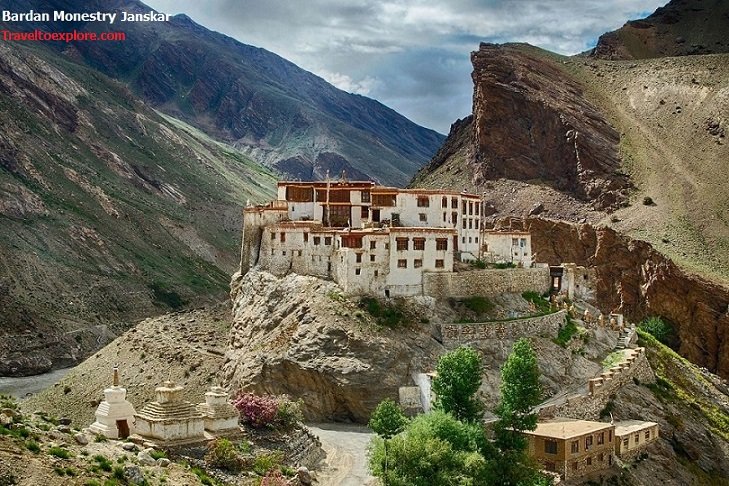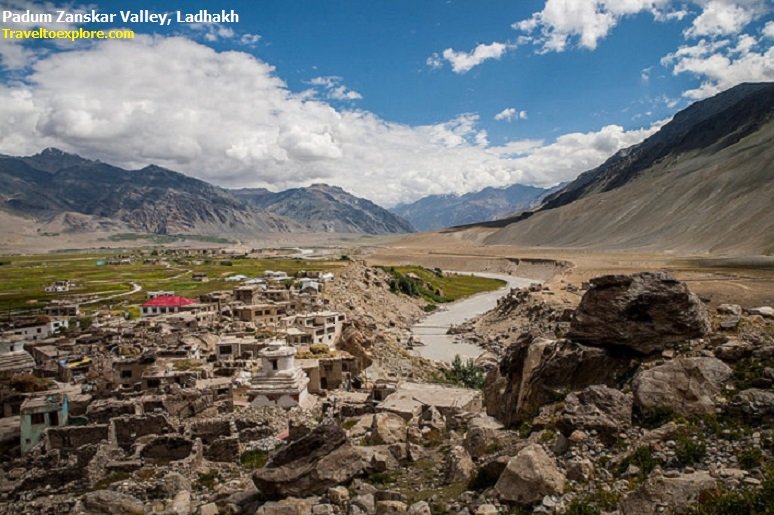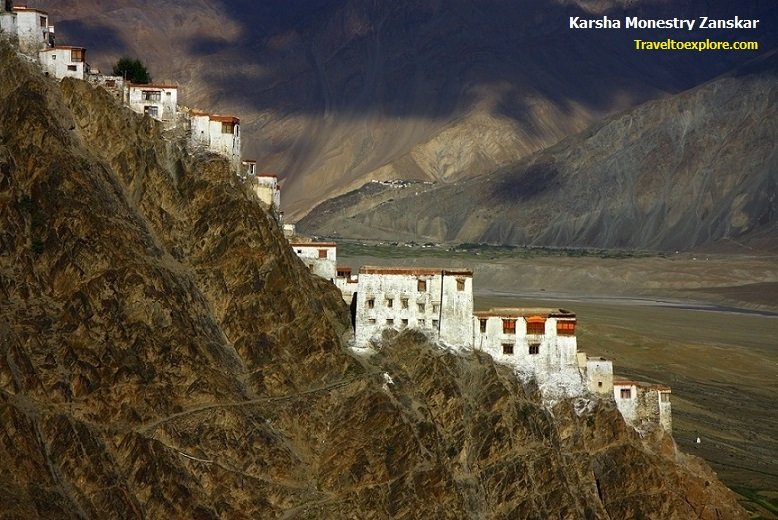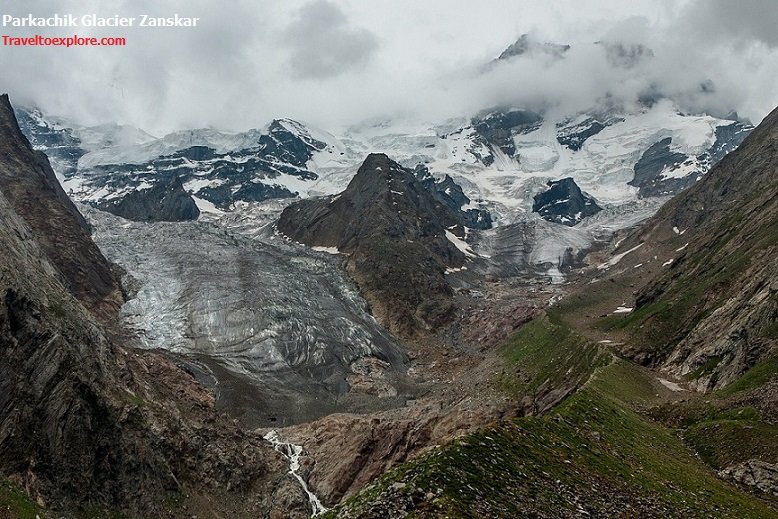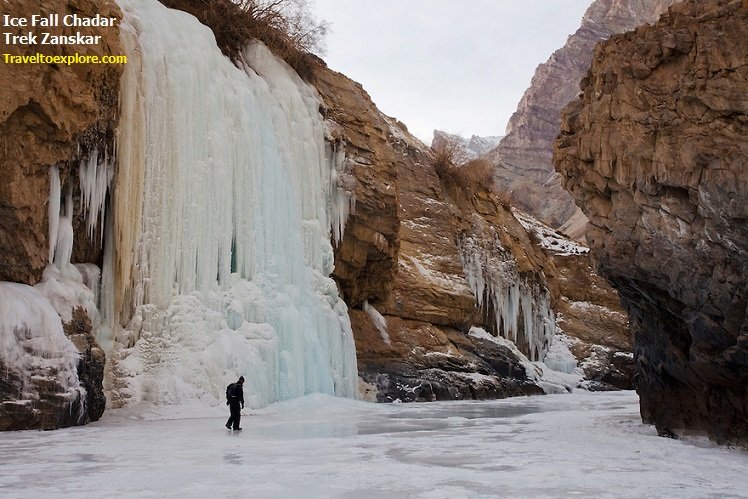ZanskarValley
Highlights
Zanskar is part of the Kargil district in India’s northern most state Jammu and Kashmir. Kargil is inaccessible by road through winter because of heavy snowing on the mountain passes that connect Kargil to the rest of India. Padum, the headquarters of Zanskar is 230 kms from Kargil. In the summers these 230 kms take a good 8 hours to traverse in a private vehicle.
Zangskar valley lies to the south west of Leh, surrounded by the Himalayan and Zangskar ranges. It is the most isolated of all the trans- Himalayan valleys. Zangskar comprises two main valleys of Stod (Doda chu) and Lunak (Tsarab chu), which converge below at Padum. The valley has an area of about 5,000 sqr. Kms. and is situated at an elevation of 13,154 ft. The area remains inaccessible for nearly 7 months in the year. As winter approaches all the high passes get close and the river freeze on the surface. Zanskaris walk along the frozon river to reach the Indus River in Nimoo village, which is known as the Famous Chadar trek.
The landscapes are wonderful with different shapes and colors of the mountains, rocks and boulders. One can also have the opportunity to see the large glacier on the way. You can also rest and enjoy the cool breeze of this exotic region. It’s unique high passes and the valleys, crystal clear streams and green meadows are very attractive, especially to nature lovers. There are many trekking routes with in zanskar itself.
What To See
Suru Valley
After Kargil it starts suru valley It separates Kargil from Zanskar. The Suru river flowing through the valley keeps it surprisingly green despite of its altitude of over 3000 meters. It was the last bit of green one would be seeing on the way to Zanskar.
The Suru valley dominated by the twin peaks of Nun (7135 mts.) and Kun (7087 mts.) are the biggest and the highest attraction in the Suru valley.
Padum
Padum is the sub-tehsil of Zangskar which is 464 kms from Leh and 234 kms from Kargil. Once the Capital of the Zangskar valley, today it is the administrative headquarter of the region and probably the most populous settlement of Zangskar. There is a small market along the main road with hotels, restaurants and number of shops. The town has a newly contructed Mosque and a recently formed Muslim community. Stakrimo Gonpa on a hill side and the 10th century monument carved on a huge rock near the river bank, provides an epigraphic evidence that the region was influnced by Budddhism since ancient period. Padum is the head quarter of Zanskar Valley and it provides Hotels, Guest Houses and couple of restaurants. Jeep is available for the sightseeing of nearby monasteries.
Monestries of Zanskar Valley
The main attractions in Zangskar are the ancient Buddhist monasteries like Zongkhul, Bardan, Stongde, Karsha, Phuktal and Sani. The beauty of these monasteries are beyond describe and most of the monasteries can be visited in a day or two by Jeep from Padum.
Phukthal Monastery
Since the monastery is build inside the huge cave its name Phukthar ( Through the develop in Cave) is said to drive the from this. Below the monastery there is famous river of TSARAP LINGTI CHU .In the monastery there are 70 monks in residence. The monks are Gelukpa in a yellow sect ( Yellow hat) the great disciple of Tsonkhapa.
It was founded in ancient times by the Phagspa Sherab Zanpo, in 11th century. a great translator of Zanskar. Dukhang, the cave of Tsonka Meditate,Tsonkhapa is the Second Budha of Gyalwa Nispa, who introduced the Gelukpa.
The yearly annual Gustor festival was held in a winter times on 28th and 29th days of the 12th Tibetan month. .On top of the huge cave there is ever green Juniper tree, grow like a umbrella.inside the cage there is also a spring water. The best way to visit the famous monastery from the Darcha – padum trek.
Barden Monastery
It was situated nearly a 8 kilometre from the distance of padum in zanskar, on top of the high cliff by the side of Lungnak river, Tsarap chu. it was founded by the Buddhisattova DEBA GYATSO, about the more than 450 years have elapsed since it was build. The principal Image ia a Gandhara statue of the maiteria, two feet in height which is said to have spoken. it was explained that it cames in ancient times from the Kashmir. There are about the 30 monks are residence.the successive reincarnation of Stakna Stullku act as the incumbent. The monastery was previously situated on top of the mountain called THA-LHA. The annual yearly festival was held in the 14th and 15th of 4rth month of Tibetan.
Mune Gonpa
It was 17 kilometer from the padum. The mune gonpas was called the Disketling, which was founded by the Boddhisattva SHERAB ZANGPO. About 25 monks are reside in the monastery. There are many secret Sharine and relics to see, the gonpa was in gelukpa sect a yellow hat.
Karsha Monastery
The Karsha Monastery is situated in the Karsha village of the Zanskar region. The Karsha, is also a largest monastery of Zanskar, is Karsha Chamspaling Gonpa. It found by Phagspa Shesrab Zangpo in late of 12 century, the translator of Zanskar. it stands today, was the result of the efforts of the Teacher, Dorje Shesrab. It was under him only that the monastery flourished and prospered. Shesrab Zangpo of Stod was the one to introduce the Gelukpa Order in the Karsha Gompa of Leh Ladakh.
The monastery have consists of a number of shrines and relics of the most exquisite wall paintings, by the Lama Dzadpa Dorje. The collection of Karsha Gompa also includes the bone relics of Dorje Rinchen. It serves as the residence of approximately 50 monks. The Gustor Festival is celebrated at Karsha every year, on the 28th and 29th day of the sixth month of the Tibetan calendar. The celebrations also include the performance of the sacred mask dance. Temples built by Rinchen Zangpo, the translator, known as the Thugsjechhenpoi Lhakhang and the Lhakhang Karpo, are situated near the Karsha Monastery. Also close by the monasteries of a nunnery called Dorjezong, and Chukchikjal situated at the top of the valley.
Zongkul monastery
The Zongkul Gonpa is stands perched on the rock face of the Ating George. There is an interesting legend associated with the Zongkul Monastery of Ladakh. It is said to be connected with Naropa, the famous Indian Yogi from Vikramshila. Infact, it is believed that he even used the two caves of the monastery for the purpose of his solitary meditation. Even today, one can see Naropa's footprint embedded in the rock and his sacred spring, located inside the meditation cave.
After Naropa meditated here, the monastery became the sacred place of meditation for all the mahasiddhas of Zanskar. Enlightened people like Dubchen Kunga Gyatso, Dubchen Nawang Tsering, Dzadpa Dorje, Karmapa, Kunga Choslag, etc have used Zongkul for meditation purposes. The Zongkhul Gompa of Leh Ladakh consists of a number of blessed shrines.
Sani Monastery
Sani Monastery is the branch of the Drukpa Kagyudpa School. It is situated on the road to Kargil, at a distance of approximately 6 km to the west of Padum. The entire Sani Monastery of Ladakh has been built in parts, each dating back to a different century. The chorten inside the oldest part of Sani Monastery is believed to be erected in the 2nd century AD. The main thing visit at sani, the kaniska Stupa, which is constructed by king kanishka in his life.
The Kanika Stupa in the backyard of its walled complex. Because of the existence of this stupa, it is believed that the monastery was associated with Kanishka, Kushan ruler of 2nd century AD. The central praying hall is situated in the main building of the monastery and stands ornamented with a rich collection of the statues of popular Buddhist divinities and Kargud-pa high lamas. Even the walls of the praying hall are adorned with frescoes and thangkas.
The most beautiful stucco murals depicting landscapes and floral designs, based on the life of Guru Padmasambhava. Outside the complex of the monastery is one of the eight most important cremation grounds of Tibetan Buddhists. The cemetery stands encircled by a ring of ancient rock-carvings, which reveal a touch of the Indian art.
The Sani Gompa of Leh Ladakh is also alleged to be connected with the famous Indian Yogi Naropa. It is believed that the Yogi meditated under the Kanika Stupa, situated in the backyard of the monastery. In month of Tibetan july i.e. on the eve of the Naro-Nasjal Festival. In this festival, the lamas from Bardan Monastery perform masked dances as ritual offering.
Tagrimo Monastery
Tagrimo Monestry lies in the plains of the Padum and is otherwise known as Kagyupa Monastery. Founded Dating back to 17th century, some 30 monks reside here. It’s famous for their collection of age old paintings. Among these one can recognize the paintings of Nawang Namgyal founder of the Bhutanese theocracy. They also have a small library open to the visitors. This place gives a chance to learn about the inhabitants of the place very closely as we are able to study their ancestors and their ways closely.
Stongdey Monestry
Renowned as the second largest monastery in Zanskar, Stongdey monastery is 18 km from Padum in Zanskar region in Jammu and Kashmir.
Founded in 1052 AD, the Ladakh monastery is also called Marpling as it was founded by Tibetan Lama Lhodak Marpa Choski Lodos.
It houses about 60 monks, the monastery belongs to Gelugpa order of Buddhism which was introduced by the Lama Gyaltsampa Tundup Palzangpo. The monastery is managed by the successors of Nari Tulku.
Like other monasteries in Ladakh, the white-washed monastery complex is constructed in Tibetan style of architecture. Strategically constructed at the top of a rocky cliff, the monastery offers panoramic views of Zanskar region.
There are number of shrines in the monastery. Images of Buddha, ancient murals, thangkas, religious scriptures in the monastery are must sees.
The monastery has strong influence over the surrounding villages and plays an important part in the life of the locals.
The annual Gustor festival is celebrated with great vigour and enthusiasm. It is also the best time to view the handicrafts created by the locals and take part in local sporting events. Mask dance by Lamas is the high point of the festival.
Various Treks of Zanskar
Chadar Trek
The Chadar trek is well known as a very unique winter trek & expedition in Ladakh. It is called ‘Khado sanglam’ in Zanskari language, the "Dakini Path" which people of Zanskar use as the last way to connect when there is no link with the out side world and hence it is left almost isolated from the rest of the world for a few months each year after the routes remain cut off due to heavy snow fall. . Zanskaris walk along the frozon river to reach the Indus River in Nimoo village, which is known as the Famous Chadar trek. The "Chadar" means here is a white sheet of crystal ice and it is a lifetime experience for the trekkers. This trek is considered as one of the most exciting and unique treks – a very special and an extraordinary trek on shiny ice on the bank of Tsarap River. You will reach by a vehicle at Chilling Sumdo (crossed road) then your trek leads in a narrow valley filled with breath-taking views of ice-peaks and unexpected hanging icicles that will mesmarize you with its natural beauty. You will spend the nights at cave camps with the help of a born fire. The trek goes along the Tsarap River in the region of Nyerag, Lingshed and constitutes to Zanskar. This trek is only for those who are madly in love with nature especially the beauty of mighty Himalayas, since its considered to be a very tough trek and gets completed in a very challanging situation. The mental and physical toughness is reqired for the trekkers who want to go for Chadar Trek.
Padum To Darcha Trek
From padum to the south the trail leads out towards the Lungnak valley that is take out to Darcha the last camp of the trek. During this trek you will have many opportunities to see the village farmers, who live in a very tradition and natural way. The farmers in this valley rear yaks and make tasty cheeses and butters. You could visit many of old ages Monasteries, like Phukther, Muney Berden are on the way. Before crossing the Shingu-la Pass (5150m), you will enjoy the amazing standing rock of Gonbo Rangjon (Netural Mahakala) and its remarkable views. This trek follows the same two routes as earlier. This is a long 21 days trek for those who like to do longer treks.
How To Reach
The route from Kargil to Padum via Penzi La is the only motorable road to reach Zangskar valley, which remains open from June to September.
Padum is Approximately 464 Kms from Leh, Leh-kargil is 234 kms and kargil-Padum is 230 kms. You can hire a Jeep or SUV’s from Leh, Weekly bus is also available to Padum the headquarter of Zanskar from Leh that has 2 night halts between Leh and Padum. You can catch buses from Kargil also for Padum. Leh is the nearest airport which is connected with Jammu and Delhi with regular flights.
Gallery
Related Package
No Package available
Related Hotel
No Hotel available
Reviews
Excellent
4.6 / 5.0
90% recommend this package
Score Breakdown
- (58)
- (132)
- (89)
- (58)
- (9)
Average Rating For
- Cleanliness 4.5
- Service 4.5
- Comfort 4.2
- Condition 3.8
- Neighbourhood 4.4
